This section contains a selection of basic junctions that can be used in a railway network in Mashinky. These junctions vary in complexity and utility. The intention of this is to provide fundamental ideas, which can be built upon to create more complex track configurations with higher train capacity.
All the exaples below have the basic signaling shown on the images, better signalling positions can improve their preformance.
Y Junctions
Y-Junctions act as a convergence or divergence points between two routes on a railway line. Simple solutions work well, but tend to have significant drawbacks when used at high capacity.
| Image
|
Name
|
Information
|
Signalling Complexity
|
No. of Points
|
No. of Crossings
|
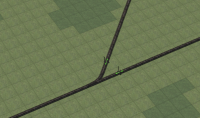
|
Single Track Junction
|
The most basic junction possible in the game
|
Low
|
1
|
0
|

|
Single Track Junction with passing loop
|
A more advanced junction with space to allow trains to pass.
|
Medium
|
3
|
0
|
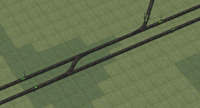
|
Branchline with Ladder Junction
|
A basic junction from double track to a 2 way single track line. Only one locomotive can use the Branchline
|
Low
|
3
|
1
|
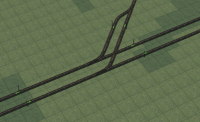
|
Branchline with double track entrance
|
A advance junction from double track to a 2 way single track line. Multiple trains can use the branchline.
|
Low
|
3
|
1
|
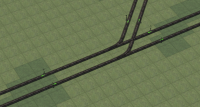
|
Mainline Split
|
A basic junction for splitting a double track mainline into two directions. Flow is restricted to 1 train accross the junction even if two trains accessing the junction do not cross each others paths.
|
Low
|
2
|
1
|
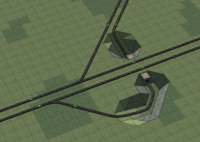
|
Mainline Continuous Flow Junction
|
A advanced mainline junction which poses no restriction on the flow of trains.
|
Low
|
2
|
0
|
Crossings
These are for locations on the tracks where two lines must cross over each other, with no tracked connection between the two.
| Image
|
Name
|
Information
|
Signalling Complexity
|
No. of Points
|
No. of Crossings
|
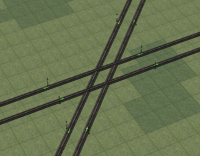
|
Crossing on the Level
|
A simple method for two mainlines to cross, Flow is restricted to 1 train accross the junction even if two trains accessing the junction do not cross each others paths.
|
Low
|
0
|
4
|

|
Overpass
|
Using bridges to cross other tracks, top line must be perpendicular to the grid, lower lines can be in any orientation. Minimum hight difference of 3 between the two lines.
|
None
|
0
|
0
|
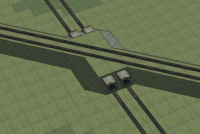
|
Underpass
|
Using Tunnels to cross under other tracks, bottom line must be perpendicular to the grid, top lines may be in any orientation. Minimum hight difference of 3 between the two lines.
|
None
|
0
|
0
|
Terminus Junctions
These are a selection of junctions that go at the end of a railway line, these are designed for both high capacity and the ability to turn the trains around to prevent the locomotives from reversing on their return journey. The max number of trains refers the number of trains can use the station without a risk of causing a blockage. All stations below can have their capacity increased by placing block signals.
| Image
|
Name
|
Information
|
Signalling Complexity
|
Max No. of trains
|
No. of Points
|
No. of Crossings
|
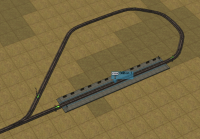
|
Return Loop
|
A simple method of turning around trains at the end of the line.
|
Low
|
2
|
1
|
0
|
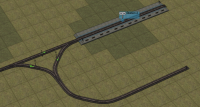
|
Turning Triangle
|
An alternative method of turning around trains at the end of the line.
|
Medium
|
2
|
3
|
0
|

|
Roundabout
|
An advanced version of the return loop, this version allows multiple lines to feed into a single station. One way signals must be used to allow for continuous flow.
|
High
|
n
|
3 x n
|
0
|
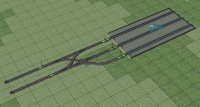
|
Main Terminus
|
A high capacity railway station that works with a continuous supply of trains. There is no reversing facilities, therefore best used when reversing trains are disabled. Further signaling can be added to increase the capacity of the Station beyond a 3 train limit.
|
Medium
|
3
|
7
|
2
|
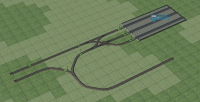
|
Main Terminus with Turning Triangle
|
A variation of the Terminus station with reversing facilities. Further signaling can be added to increase the capacity of the Station beyond a 3 train limit.
|
High
|
3
|
8
|
2
|
 Railways
Railways
 Roadways
Roadways Airports
Airports Landscaping
Landscaping Electrification
Electrification












